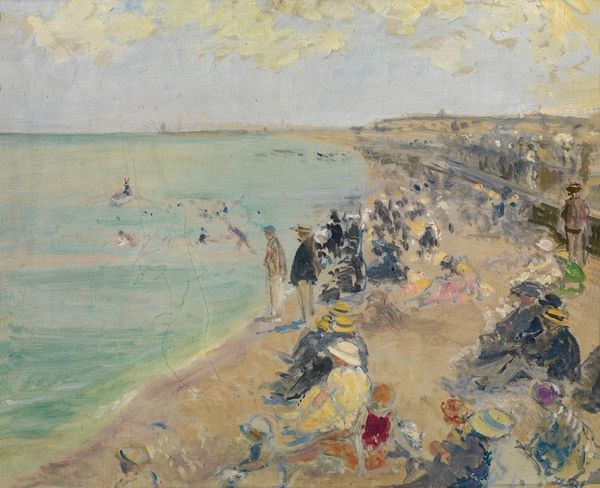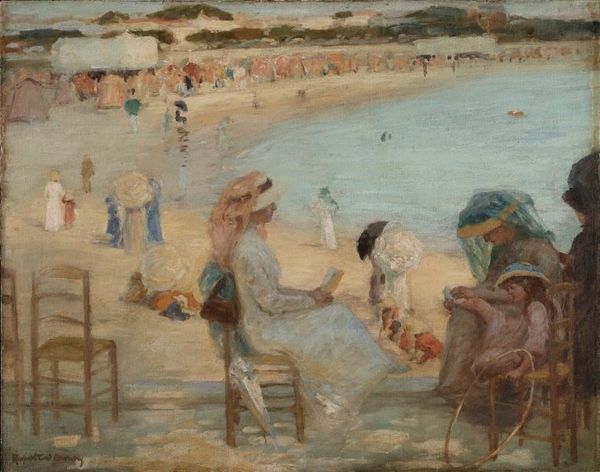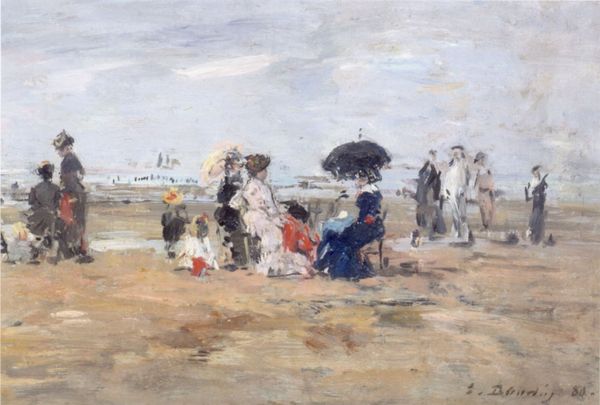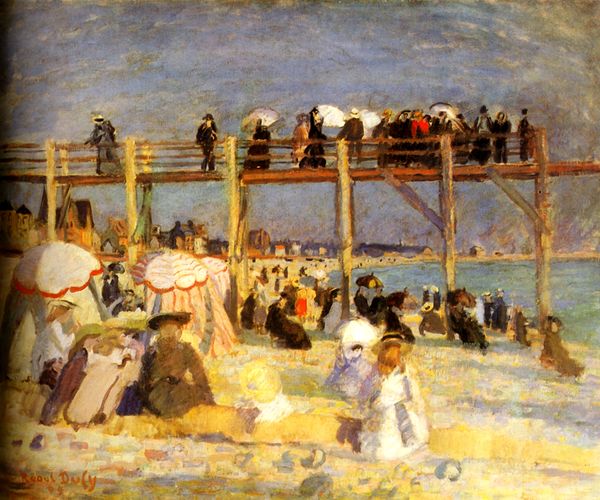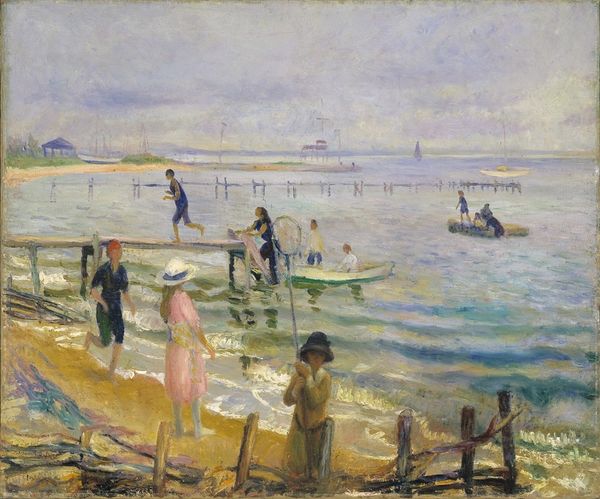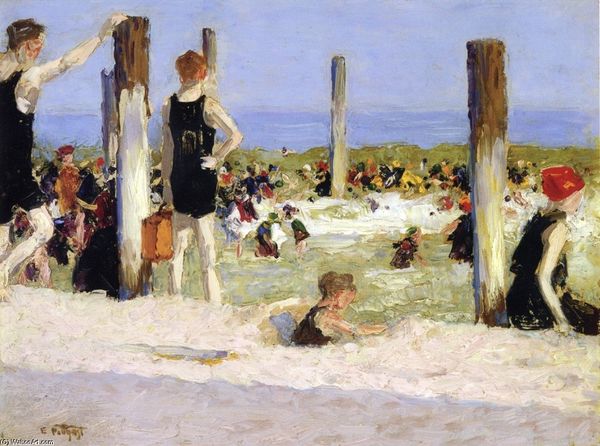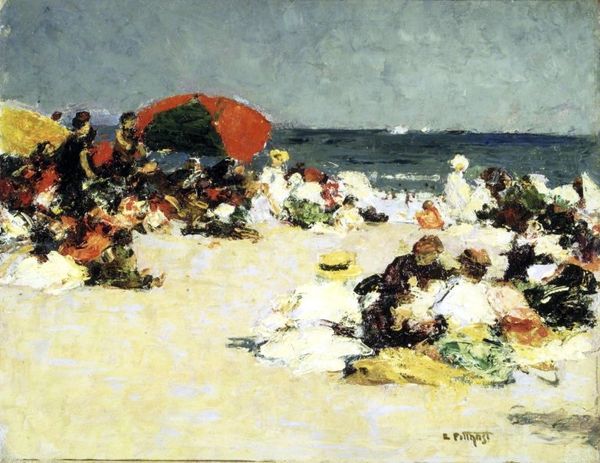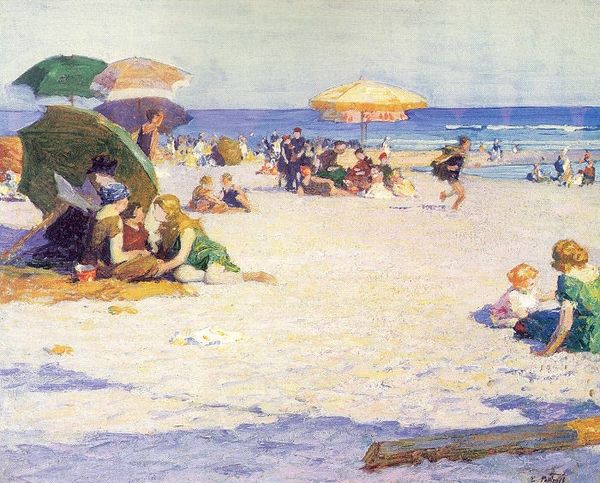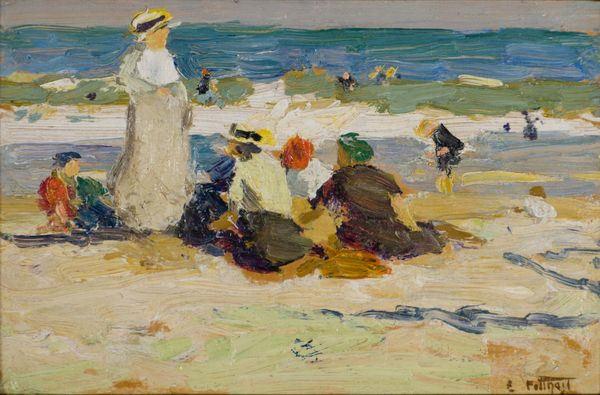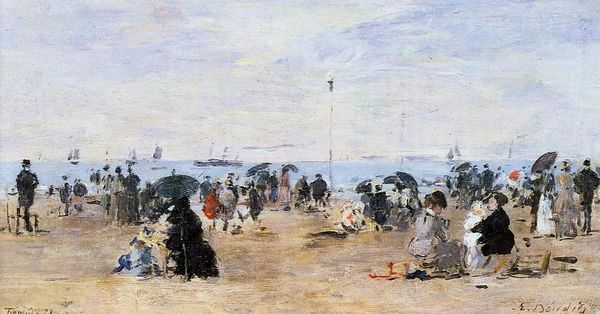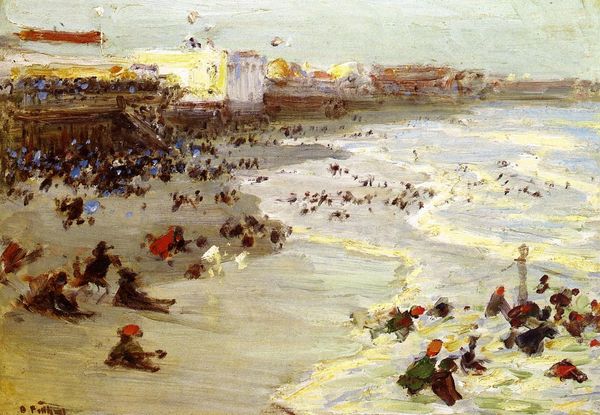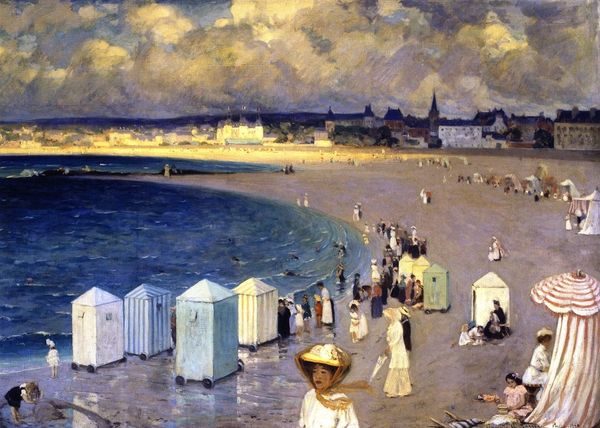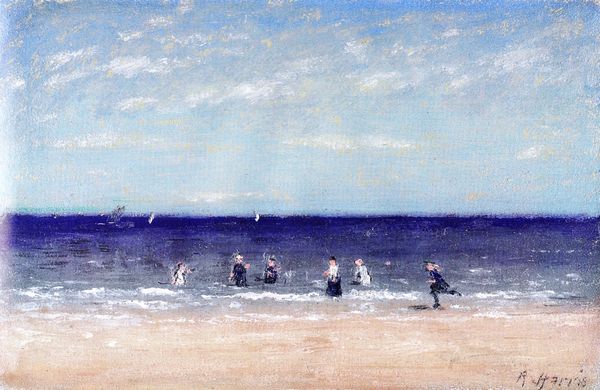
Dimensions: 13.63 x 32387 cm
Copyright: Public domain
Curator: Looking at this artwork, I see it depicts a very light and carefree day at Revere Beach. There are so many people in it enjoying a summer day. It's from 1896 and comes to us courtesy of Maurice Prendergast's distinctive brush. Editor: There's almost a pointillist touch here, isn’t there? But also, it gives off the idea of leisure for some at a certain moment in time, it’s also hard to avoid questions like “who’s absent?”. Curator: It's intriguing to view it through that lens, as the painting indeed reflects the societal dynamics of the era. Prendergast was a keen observer of social scenes, but often from his own distinctive artistic vantage point. How does his choice of a watercolor medium and plein-air technique speak to that? Editor: The watercolor lends to this light atmosphere, almost an airiness. In the late 19th century, we also see this in relation to increasing urbanization and industrialization. I can’t help but view these scenes through a gendered perspective too – note the bonnets, parasols. It reflects an experience of public space which, for women, was extremely restrictive. Curator: And Prendergast seemed to enjoy observing such groups as a common theme through his other work as well, often focusing on their fashions of dress, or color usage. How does the title play into the reading? Is there something uniquely “Revere Beach” we need to consider? Editor: The very mundane, literal naming speaks volumes. There is a sense that he captures leisure that maybe some did not get to experience as easily. "Revere Beach" serves as a marker of this intersection of pleasure, class, and space, underscoring that access to leisure activities wasn't universal and was subject to very specific social demarcations. Curator: This perspective shifts our focus towards a more critical examination of Prendergast's oeuvre. It’s also worth wondering if these works helped to either perpetuate or challenge such divisions and hierarchies within those social realities of late 19th-century America. Editor: I concur. The conversation helps bring greater social, cultural, and historical consciousness to these images, prompting audiences to probe deeper into the complex forces that governed those formative years and our own today.
Comments
No comments
Be the first to comment and join the conversation on the ultimate creative platform.
